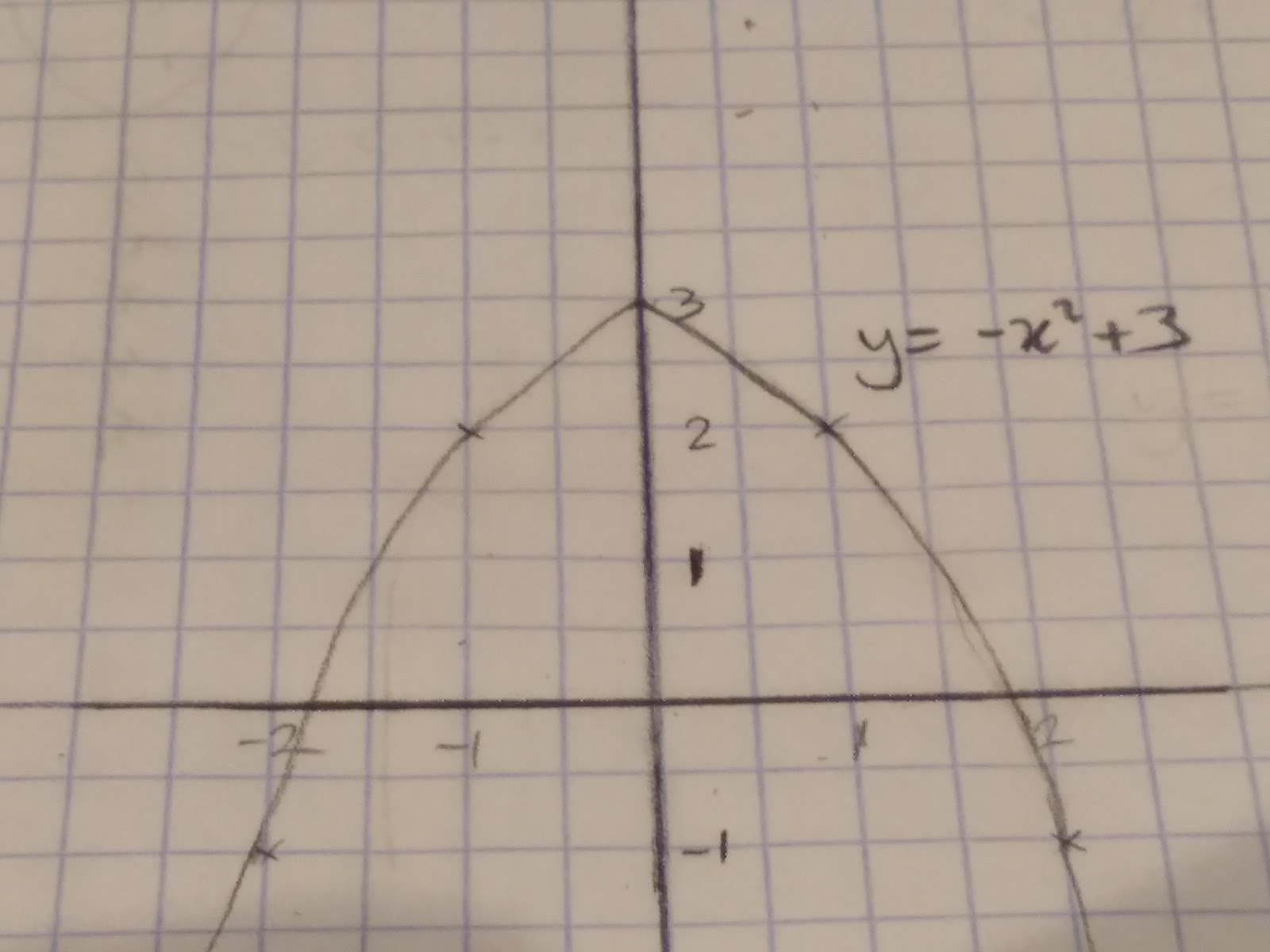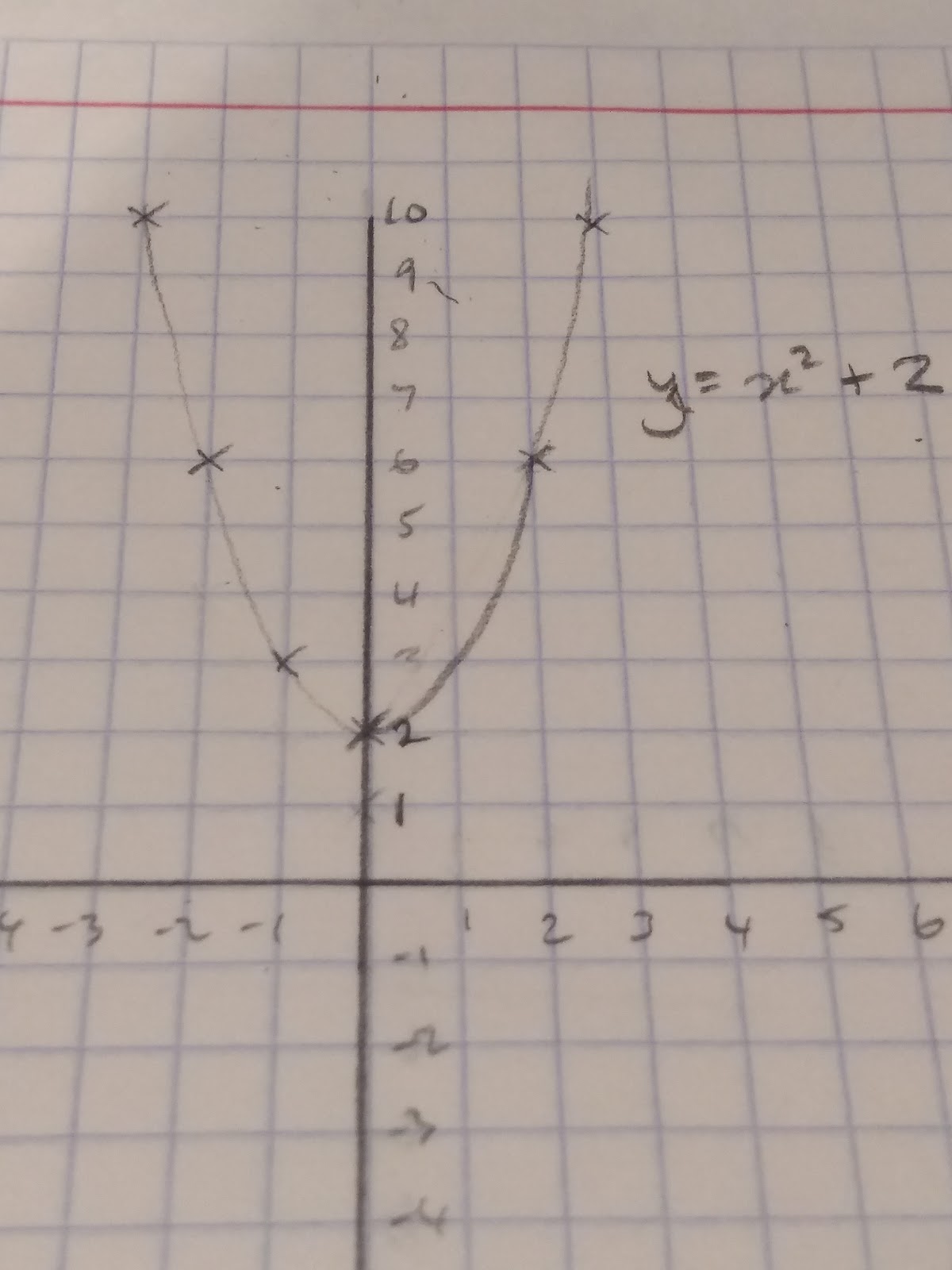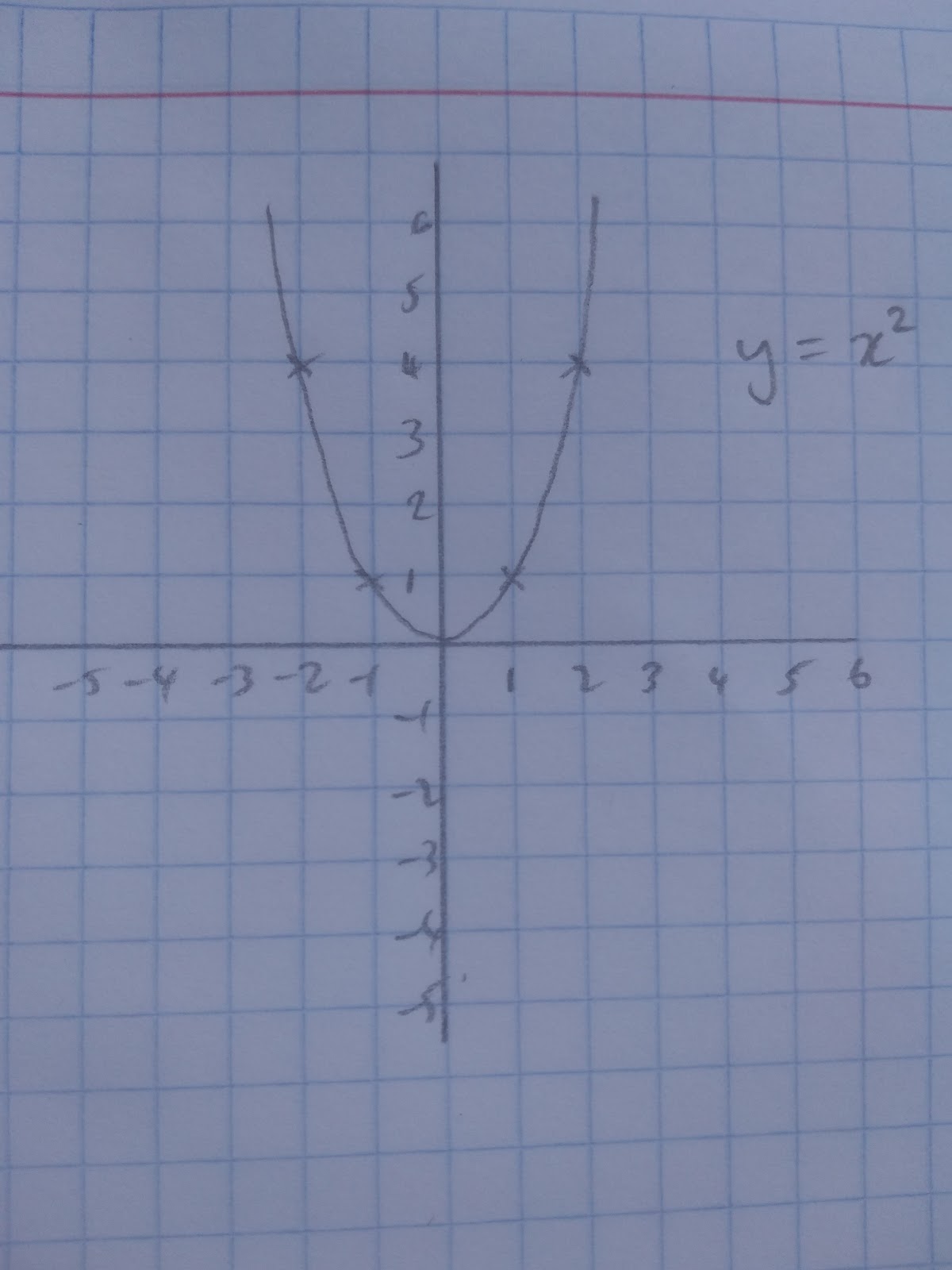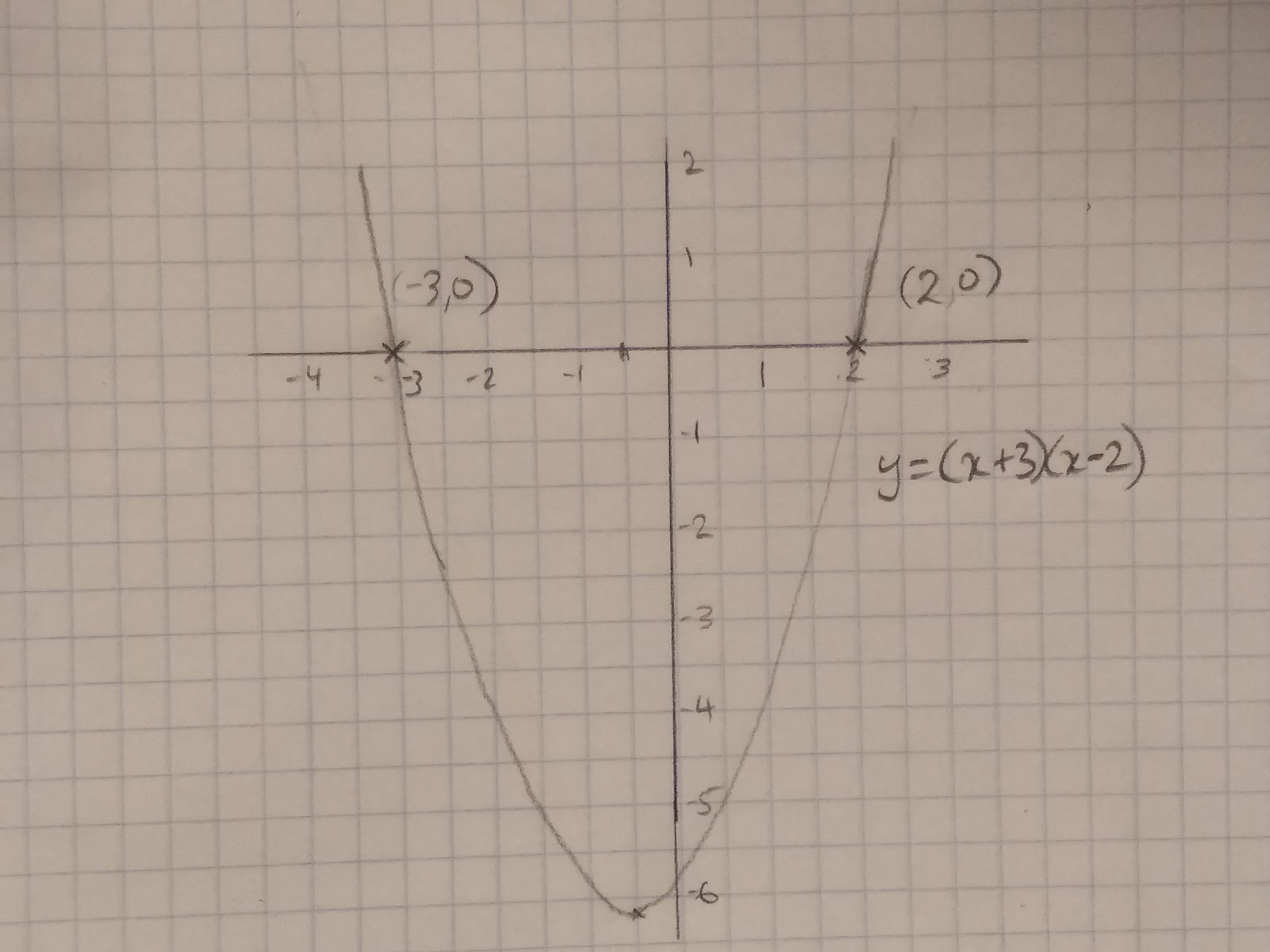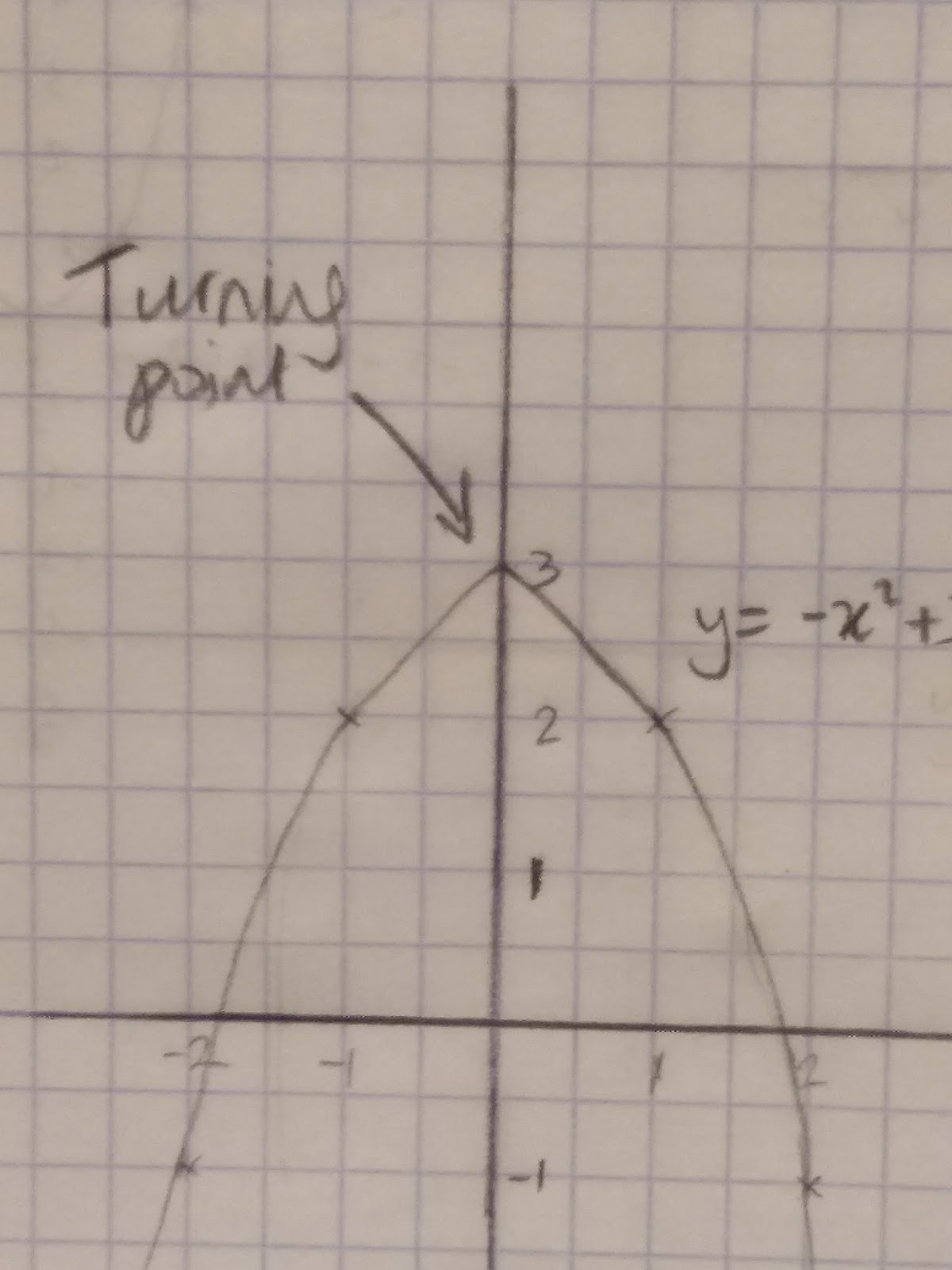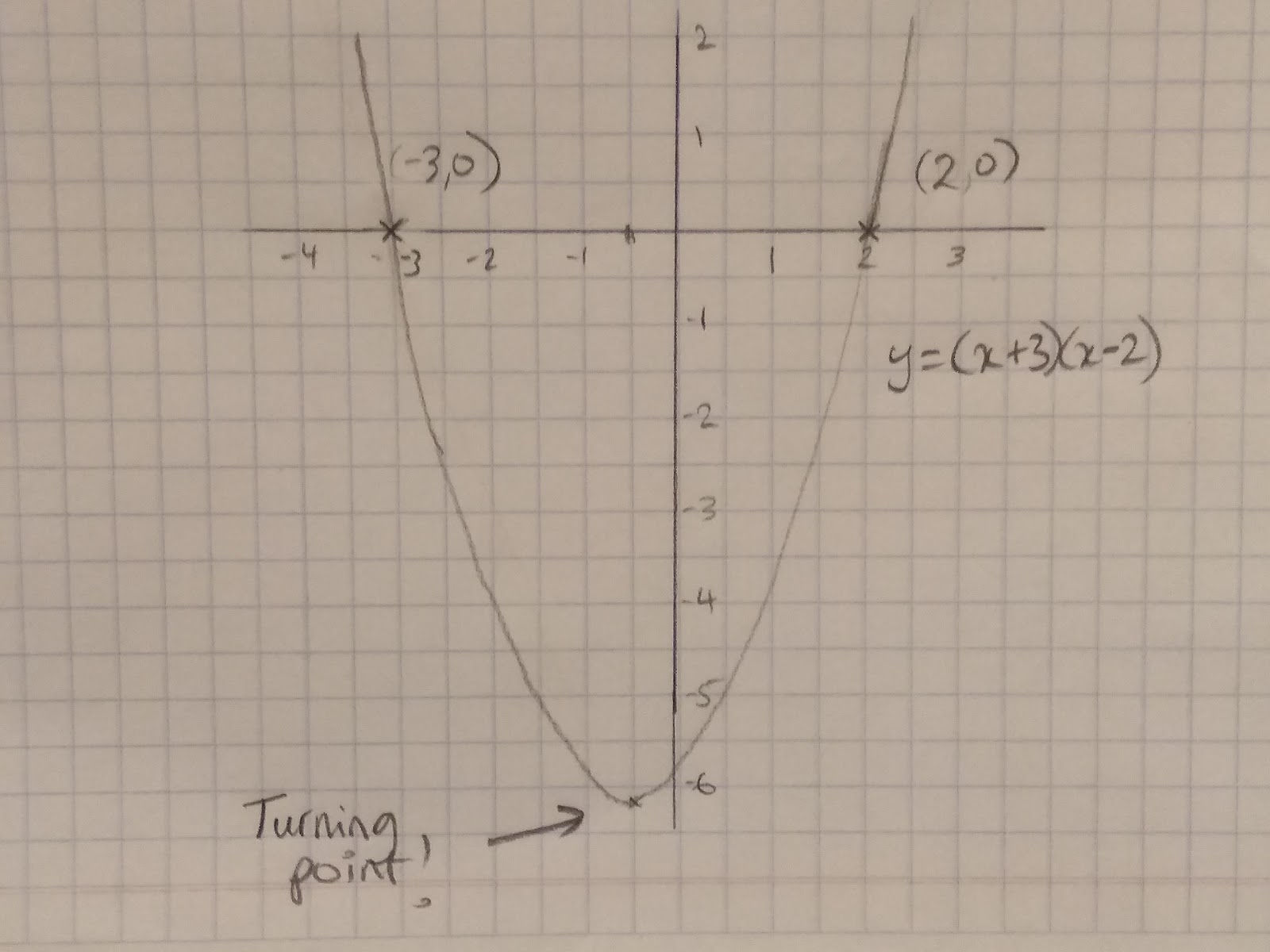Identifying Roots and Turning Points of Quadratic Functions
Identifying Roots
Quadratic graphs tend to look a little like this:
y= -x2+3
y=x2+2
y=x2
All of these equations are quadratics but they all have different roots. But what is a root??
A root is the x value when the y value = 0. It’s where the graph crosses the x axis. Because y=x2+2 does not cross the x axis it does not have any roots. This is easy to see graphically! Equally if we have a graph we can simply read off the coordinates that cross the x axis to estimate the roots.
To work this out algebraically however we use part of the quadratic formula: b2 -4ac
If b2 - 4ac = 0 then there will be one real root, one place where the graph crosses the x axis eg. y=x2
If b2 - 4ac > 0 There will be two real roots, like y= -x2+3
If b2 - 4ac < 0 there won’t be any real roots, like y=x2+2
We can show this algebraically as well:
Remembering that ax2+ bx + c is the standard format of quadratic equations.
For y=x2 a= 1 b=0 c=0
b2 - 4ac
02 - 4(1)(0) = 0
0 - 0 = 0 therefore there is one real root.
For y = -x2 + 3 a=-1 b=0 c=3
b2 - 4ac =
02 - 4(-1) (3) = 12
12 >0 so there are two real root.
For y=x2+2 a=1 b=0 c=2
02 - 4(1) (2) = -12
-12 < 0 therefore there are no real roots.
Given that the roots are where the graph crosses the x axis, y must be equal to 0. With this knowledge we can find roots of quadratic equations algebraically by factorising quadratics. For example, if we have the graph y = x2 + x + 6, to find our roots we need to make y=0.
Therefore 0 = x2 + x + 6
Factorise 0 = (x+3) (x-2)
So each bracket must at some point be equal to 0
0 = (x+3), -3 = x
0 = (x-2), 2 = x
Which is exactly what we can see here:
Identifying turning points
The turning point of a graph is where the curve in the graph turns.
The turning point will always be the minimum or the maximum value of your graph.
To find the turning point of a quadratic equation we need to remember a couple of things:
- The parabola ( the curve) is symmetrical
- If we know the x value we can work out the y value!
So remember these key facts, the first thing we need to do is to work out the x value of the turning point. Let’s work it through with the example y = x2 + x + 6
Step 1: Find the roots of your quadratic- do this by factorising and equating y to 0. (Exactly as we did above with Identifying roots)
Therefore 0 = y = x2 + x + 6
Factorise 0 = (x+3) (x-2)
So each bracket must at some point be equal to 0
0=(x+3), -3= x
0=(x-2), 2=x
Step 2: Find the average of the two roots to get the midpoint of the parabola. This will give us the x value of our turning point!
-3 + 2 / 2 = -½
Therefore x= -½.
Step 3: Substitute x into the original formula to find the value of y.
y= (-½)2 -½ - 6
=¼ -½ - 6
= -6.25
- How many roots does y= 3x^2+2x+6 have?
- Your answer should include: None / Zero / 0
- What is the turning point of x^2+5x+4?
- Your answer should include: -2.5 / 22.75
